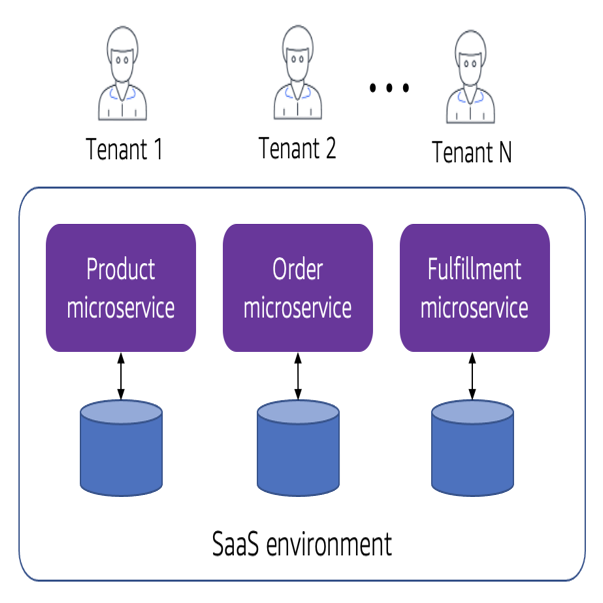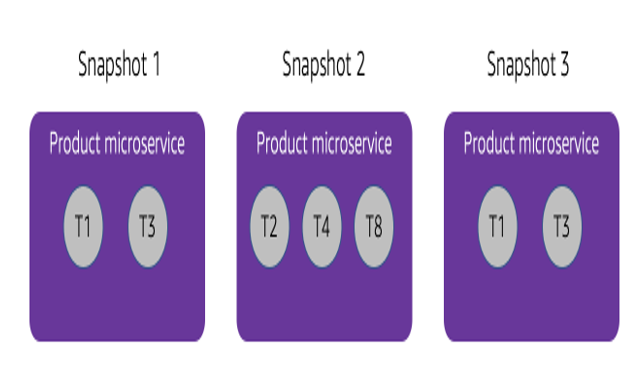The Move to Shared Infrastructure
By now, the basic challenges of the traditional model should be clear. While some organizations were struggling with this model, others already understood this approach would simply not scale economically or operationally. Larger business-to-consumer (B2C) software companies, for example, knew that supporting thousands or even millions of customers in a one-off model simply wouldn’t work.
These B2C organizations really represented the early days of SaaS, laying the groundwork for future SaaS evolution. Achieving scale for these organizations was, from the outset, about building systems from the ground up that could support the massive scale of the B2C universe. They thrived based on their ability to operate in a model where all customers were presented with a single, unified experience.
This shift to sharing infrastructure amongst customers opened all new opportunities for software providers. To better understand this, Figure 1-2 provides a conceptual view of how applications can share infrastructure in a SaaS model.

Figure 1-2. A shared infrastructure model
In Figure 1-2 you’ll see a simplified view of the traditional notion of SaaS. You’ll notice that we’ve completely moved away from the distributed, one-off, custom nature of the classic model we saw in Figure 1-1. In this approach, you’ll see that we have a single SaaS environment with a collection of infrastructure. In this example, I happened to show microservices and their corresponding storage. A more complete example would show all the elements of your system’s application architecture.
If we were to take a peek inside one of these microservices at run-time, we could potentially see any number of tenants (aka customers) consuming the system’s shared infrastructure. For example, if we took three snapshots of the Product microservice at three different time intervals, we might see something resembling the image in Figure 1-3.

Figure 1-3. Shared microservices
In snapshot 1, our product microservice has two tenants consuming our service (tenant1 and tenant2). Another snapshot could have another collection of tenants that are consuming our service. The point here is that the resource no longer belongs to any one consumer, it is a shared resource that is consumed by any tenant of our system.
This shift to using shared infrastructure also meant we needed a new way to describe the consumers of our software. Before, when every consumer had its own dedicated infrastructure, it was easy to continue to use the term “customer”. However, in the shared infrastructure model of SaaS, you’ll see that we describe the consumers of our environment as “tenants”.
It’s essential that you have a solid understanding of this concept since it will span almost every topic we cover in this book. The notion of tenancy maps very well to the idea of an apartment complex where you own a building and you rent it out to different tenants. In this model, the building correlates to the shared infrastructure of your solution and the tenants represent the different occupants of your apartments. These tenants of your building consume shared building resources (power, water, and so on). As the building owner, you manage and operate the overall building and different tenants will come and go.
You can see how this term better fits the SaaS model where we are building a service that runs on shared infrastructure that can accommodate any number of tenants. Yes, tenants are still customers, but the term “tenant” lets us better characterize how they land in a SaaS environment.